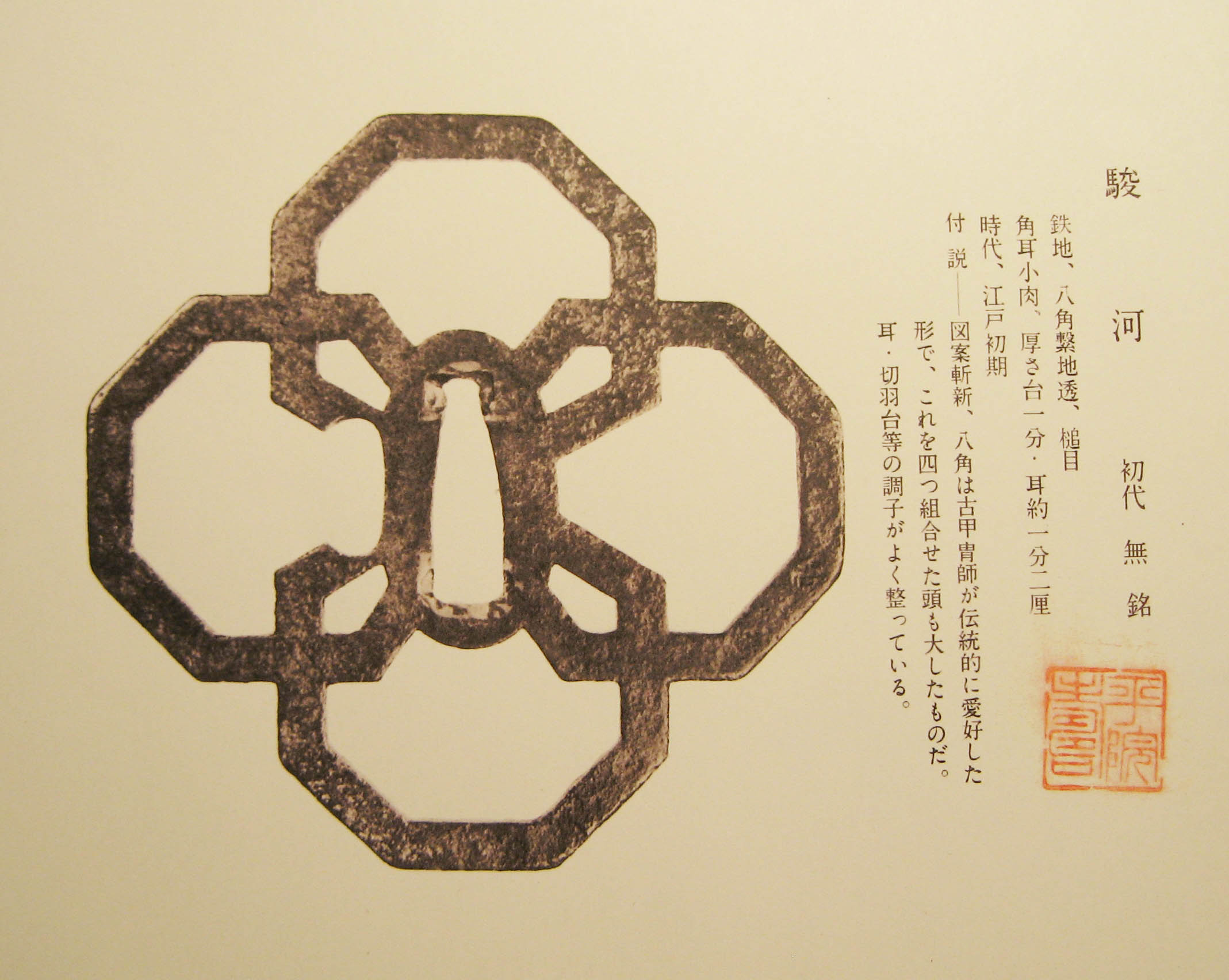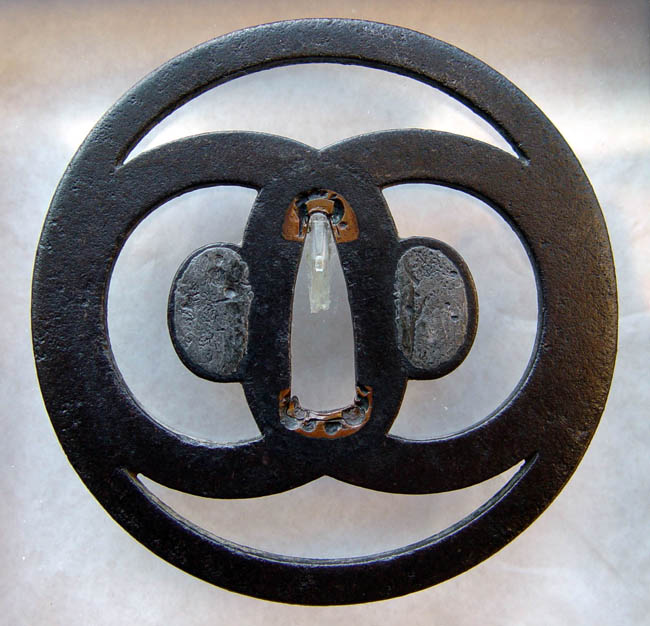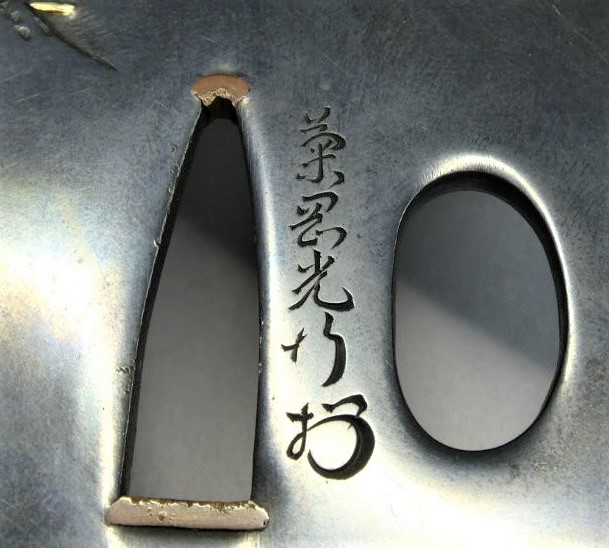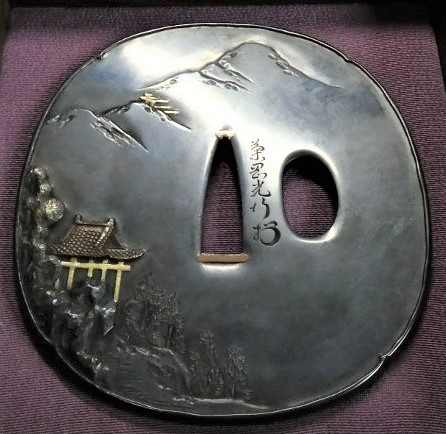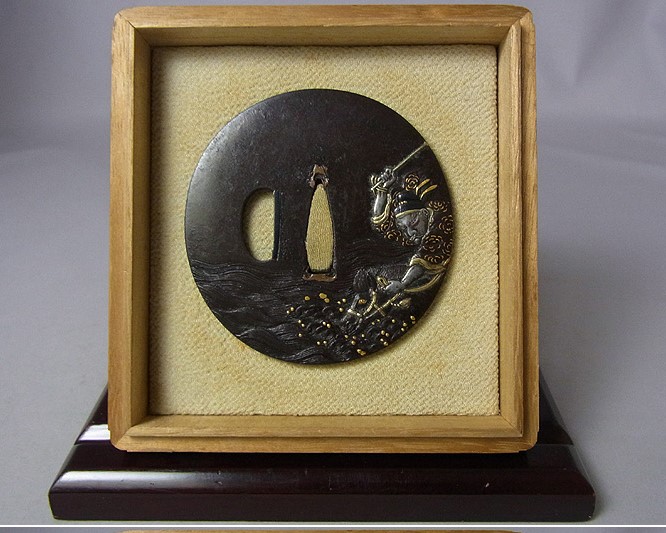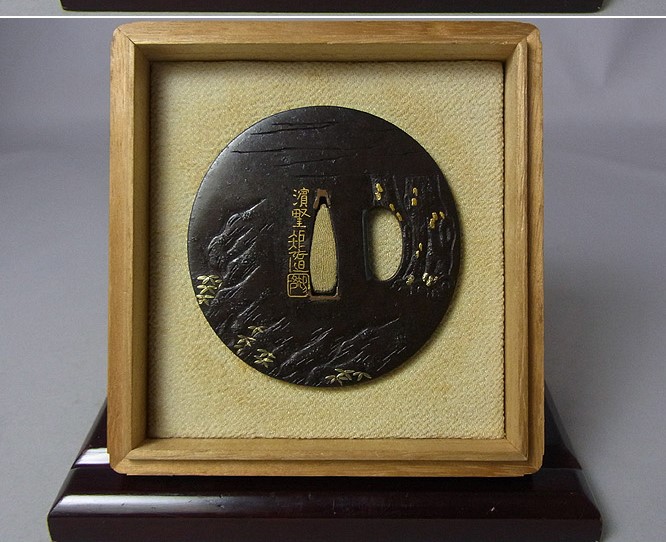|
TACHI KANEGU-SHI |
|
| TACHI-STYLE TANTO Tsuba A tachi-style, mokko shape tsuba for a tanto belonging to a high ranking Samurai. Dates to ca. 1400 or early Muromachi period. Copper center with Shakudo fukurin, both seppa's are shakudo with inlays of gold, silver, copper, and shakudo. (Haynes & Long) | |
| NERIKAWA Tsuba "Extant Edo neri tsuba tend to date to the late Edo through Meiji periods, and in terms of production were often the domain of lacquerers who used them as an alternate medium to exhibit their skills. They tend to be detailed and show a great skill in execution. They are often crisp and retain most of the lacquer which is often in excellent condition and can exhibit a wide range of colors and techniques." (Haynes, Long, Markhasin) | |
 |
|
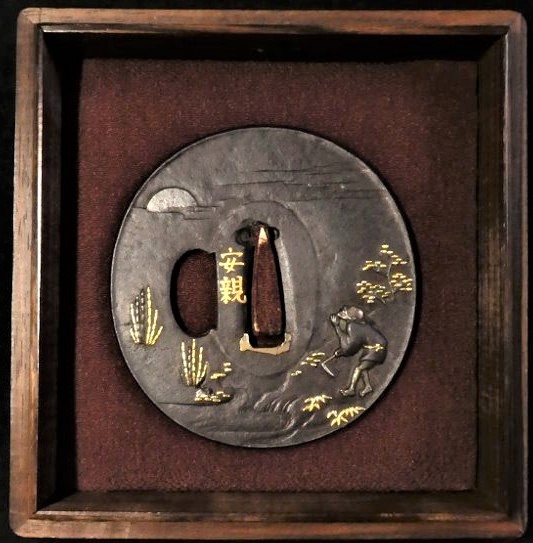 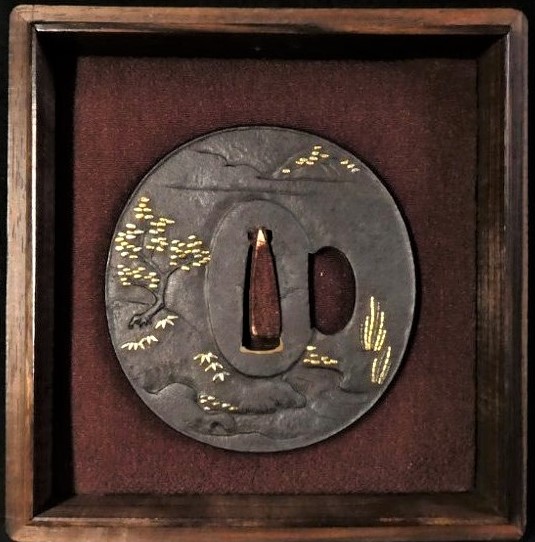 |
'YASUCHIKA' "Attribution and write-up to follow." (Haynes) |
  |
'KAEI TSUCHINOE-SARU FUYU ENAMI ITCHIN' and Kao (H 01973.0) Provenance: Elliott Long Write up to follow. |
 |
|
 |
|
 |
|
 |
A exceptional tsuba attributed to the First Master TADAMASA, H 09096.0. The quality of this work is, as Dr. Torigoye said, "a masterpiece." The only illustration I can find is in the 'TOSO SORAN', 1978, by Dr. Torigoye, page 241, bottom illustration. At that time it belonged to Tetsu Kariya. This tsuba should have never left Japan, as I cannot find a better example of the work of the First Tadamasa illustrated in any book." (Haynes) |
 |
"A rounded square shape with the motif of bamboo in the wind. The seppa-dai is pointed, there is linear tekkotsu in the rim, the metal is of very good quality, the surfaces appear polished, and the forms are thick and full-bodied. The guard has a look of antique elegance. It gives sufficient evidence of the style of the first master Tadamasa."(Long) |
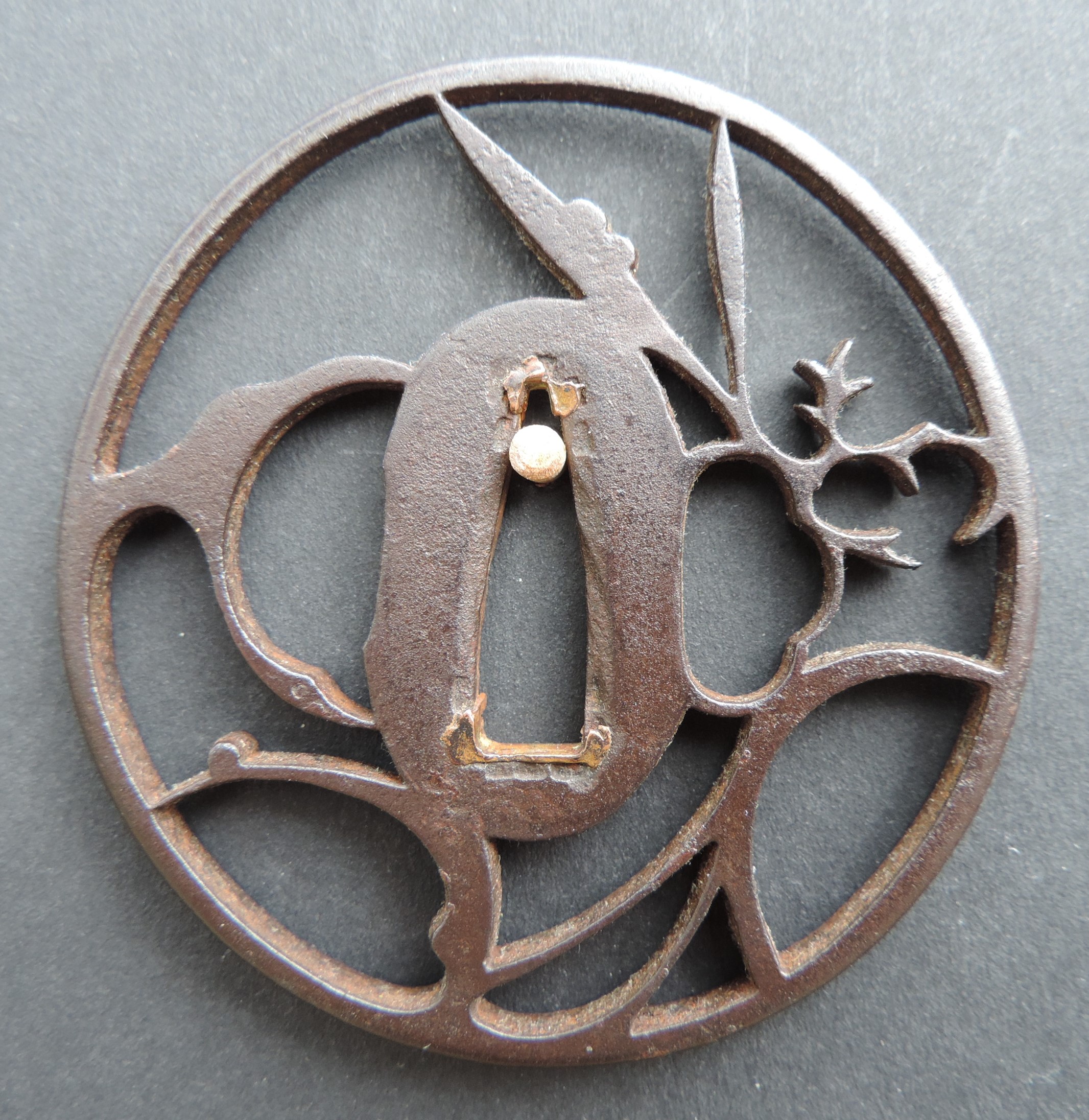 |
"Slight oval shape iron tsuba with sukashi of Musashino subject design of marsh plants, pampas grass with a dew drop, and alighting goose forming kozuka hitsu. Dates from ca. 1650. Though unsigned, appears to be the work of the 2nd Tadamasa (H 09097.0). The style of the 2nd Tadamasa resembles the later work of the 1st Tadamasa, however, the shape of the seppa dai is koban. The refined iron, and sophisticated design and finish define the skill and talent that is typical of the 2nd Akasaka Master Tadamasa." (Holbrook & Long) 7.15cm x 7.4cm x 0.4cm |
 |
"A plum tree forms an irregular shape of the whole, with branches within the rim. The base iron is well forged. A carefully finished appearance gives a calming and quiet visage. The attribution is by 'TOEN SHA', dated March 24, 1974. The named club is Murakami Tadasuke. The owner at this time was Kawatsuchi." (Long) |
 |
"Dates to ca. 1500 or earlier. Write-up to follow. " (Haynes)
7.32cm x 7.19cm x (face) 0.27cm. |
 |
"Dates to ca. 1400 or earlier. Write-up to follow. " (Haynes)
7.14cm x 7.04cm x (face) 0.33cm. |
 |
"Dates to ca. 1400. Write-up to follow. Attribution by NBTHK." (Haynes) 9.00cm x 9.60cm x (face) 0.20cm x (rim) 0.35cm. |
 |
HIZEN/VIETNAMESE A circular brass plate guard originally from South Asia, possibly Vietnam. The carving and engraving is far better than most Chinese kebori pieces. The rim is gold gilt over brass. The surface of both sides elegantely carved with two dragons chasing the flaming jewels and many auspicious symbols. Upon arriving in Japan (Hirado, Kagoshima, Nagasaki), a tsubaco used an iron insert to accommodate the nakago of a katana sword. The hitsu-ana added at the time of the placement of the iron insert. 7.30cm x 0.40cm. |
 |
'YOSHIMICHI' "A tapered mokko shape iron tsuba that represents the greatness of Nioh. At the bottom there is a pagoda or a pagoda-like shadow, which contrasts with the carving of the palm and arm. The fine carving of the honeycomb structure is a representation of the gate of Todaiji Temple. Signed: 'YOSHIMICHI'. Refer to Haynes H 11831.0." 7.10cm (upper) / 8.00cm (lower) x 8.56cm x 0.40cm |
 |
|
|
'ARIKAWA SANEMASA' |
|
 |
Umetada Gohei & Map of Japan SOLD "Umetada school iron tsuba. Motif of a Shinto spiritual implement called a Gohei, used for ritual blessings on one side, and an old map of Japan on the other. The Gohei is inlaid in silver and gold. The map shows the old provinces of Kyushu, Shikoku and Honshu, each with their names inlaid in gold. Hokkaido was not yet part of Japan at that time. Finely inscribed waves surround the islands - a nice touch. The inlay on both sides is executed in nunome-zogan. The carving on both sides is done in sukidashibori, meaning that the plate has been carved down slightly from the mimi and seppadai to define the motifs, with finer carving tools used to add details and scribe lines for the inlay. The tsuba is in excellent condition, with almost no loss of inlay. Measurements: 8.4cm x 7.8cm x 0.4cm. Early Edo Period, 17th century." (Long) |















